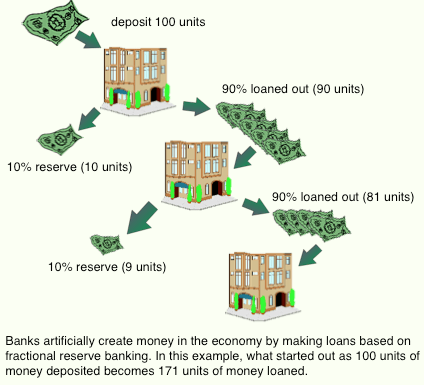Quantitative easing
In recent decades, central banks have tried quantitative easing to infuse the economy with cash while maintaining a low risk of severe inflation. The quantitative easing approach is where a central bank increases cash flow by purchasing another entity's bonds.
Anyone can buy bonds from corporations or governments. When you buy a bond, you're really loaning money to the company or government, who will pay it back later with interest.
- When a person buys a bond, they're using money already in circulation.
- When a central bank buys a bond, it creates cash.
10
289 reads
CURATED FROM
IDEAS CURATED BY
The idea is part of this collection:
Learn more about moneyandinvestments with this collection
How to start a successful business
How to build a strong team
How to market your business
Related collections
Similar ideas to Quantitative easing
Fractional Reserve & Money Supply
Banks loan money they don't have. Most hold a limited reserve to serve the few who decide to make redraws. When the majority decides to liquidate their bank accounts we have what is called a bank run.
In order to protect the banks, central banks were created to provide a gu...
Read & Learn
20x Faster
without
deepstash
with
deepstash
with
deepstash
Personalized microlearning
—
100+ Learning Journeys
—
Access to 200,000+ ideas
—
Access to the mobile app
—
Unlimited idea saving
—
—
Unlimited history
—
—
Unlimited listening to ideas
—
—
Downloading & offline access
—
—
Supercharge your mind with one idea per day
Enter your email and spend 1 minute every day to learn something new.
I agree to receive email updates
